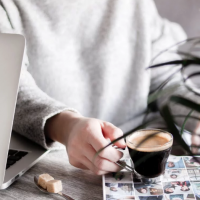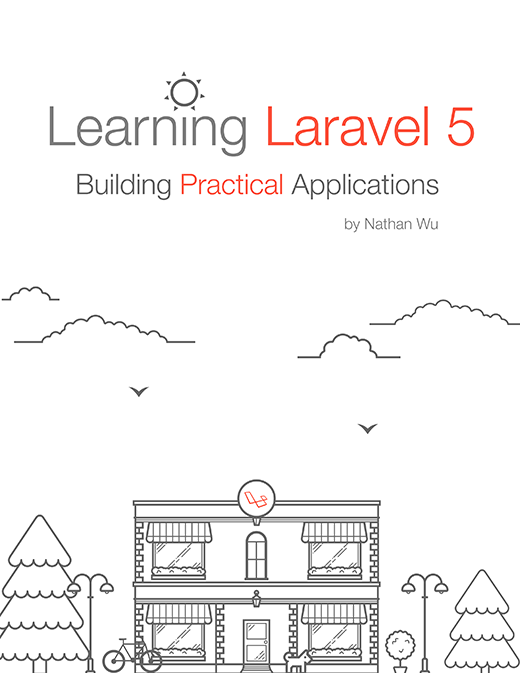Speed up Laravel/Lumen by Swoole
This is a good Laravel package, which can be used to speed up our Laravel/Lumen app.

Features
-
High performance Swoole
-
Built-in Http/WebSocket server
-
Memory resident
-
Gracefully reload
-
Automatically reload when code is modified
-
Support Laravel/Lumen, good compatibility
-
Simple & Out of the box
Requirements
| Dependency | Requirement | |
|---|---|---|
| PHP | ||
| Swoole | ||
| Laravel/Lumen | ||
| Gzip[optional] | zlib, be used to compress the HTTP response, check by *ldconfig -p | grep libz* |
| Inotify[optional] | inotify, be used to reload all worker processes when your code is modified, check by php --ri inotify |
Install
1.Require package via Composer(packagist).
# Run in the root path of your Laravel/Lumen project.
composer require "hhxsv5/laravel-s:~1.0" -vvv
# Make sure that your composer.lock file is under the VCS2.Add service provider.
-
Laravel: inconfig/app.phpfile'providers' => [ //... Hhxsv5\LaravelS\Illuminate\LaravelSServiceProvider::class, ], -
Lumen: inbootstrap/app.phpfile$app->register(Hhxsv5\LaravelS\Illuminate\LaravelSServiceProvider::class);
3.Publish configuration.
Suggest that do publish after upgrade LaravelS every time
php artisan laravels publish
Special for Lumen: you DO NOT need to load this configuration manually in bootstrap/app.php file, LaravelS will load it automatically.
// Unnecessary to call configure()
$app->configure('laravels');4.Change config/laravels.php: listen_ip, listen_port, refer Settings.
Run demo
php artisan laravels {start|stop|restart|reload|publish}
| Command | Description | |
|---|---|---|
start |
Start LaravelS, list the processes by *ps -ef | grep laravels* |
stop |
Stop LaravelS | |
restart |
Restart LaravelS | |
reload |
Reload all worker processes(Contain your business & Laravel/Lumen codes), exclude master/manger process | |
publish |
Publish configuration file laravels.php into folder config |
Cooperate with Nginx (Recommended)
gzip on;
gzip_min_length 1024;
gzip_comp_level 2;
gzip_types text/plain text/css text/javascript application/json application/javascript application/x-javascript application/xml application/x-httpd-php image/jpeg image/gif image/png font/ttf font/otf image/svg+xml;
gzip_vary on;
gzip_disable "msie6";
upstream laravels {
server 192.168.0.1:5200 weight=5 max_fails=3 fail_timeout=30s;
#server 192.168.0.2:5200 weight=3 max_fails=3 fail_timeout=30s;
#server 192.168.0.3:5200 backup;
}
server {
listen 80;
server_name laravels.com;
root /xxxpath/laravel-s-test/public;
access_log /yyypath/log/nginx/$server_name.access.log main;
autoindex off;
index index.html index.htm;
# Nginx handles the static resources(recommend enabling gzip), LaravelS handles the dynamic resource.
location / {
try_files $uri @laravels;
}
# Response 404 directly when request the PHP file, to avoid exposing public/*.php
#location ~* \.php$ {
# return 404;
#}
location @laravels {
proxy_http_version 1.1;
# proxy_connect_timeout 60s;
# proxy_send_timeout 60s;
# proxy_read_timeout 120s;
proxy_set_header Connection "keep-alive";
proxy_set_header X-Real-IP $remote_addr;
proxy_set_header X-Real-PORT $remote_port;
proxy_set_header X-Forwarded-For $proxy_add_x_forwarded_for;
proxy_set_header Host $http_host;
proxy_set_header Scheme $scheme;
proxy_set_header Server-Protocol $server_protocol;
proxy_set_header Server-Name $server_name;
proxy_set_header Server-Addr $server_addr;
proxy_set_header Server-Port $server_port;
proxy_pass http://laravels;
}
}Cooperate with Apache
LoadModule proxy_module /yyypath/modules/mod_deflate.so
<IfModule deflate_module>
SetOutputFilter DEFLATE
DeflateCompressionLevel 2
AddOutputFilterByType DEFLATE text/html text/plain text/css text/javascript application/json application/javascript application/x-javascript application/xml application/x-httpd-php image/jpeg image/gif image/png font/ttf font/otf image/svg+xml
</IfModule>
<VirtualHost *:80>
ServerName www.laravels.com
ServerAdmin [email protected]
DocumentRoot /xxxpath/laravel-s-test/public;
DirectoryIndex index.html index.htm
<Directory "/">
AllowOverride None
Require all granted
</Directory>
LoadModule proxy_module /yyypath/modules/mod_proxy.so
LoadModule proxy_module /yyypath/modules/mod_proxy_balancer.so
LoadModule proxy_module /yyypath/modules/mod_lbmethod_byrequests.so.so
LoadModule proxy_module /yyypath/modules/mod_proxy_http.so.so
LoadModule proxy_module /yyypath/modules/mod_slotmem_shm.so
LoadModule proxy_module /yyypath/modules/mod_rewrite.so
ProxyRequests Off
ProxyPreserveHost On
<Proxy balancer://laravels>
BalancerMember http://192.168.1.1:8011 loadfactor=7
#BalancerMember http://192.168.1.2:8011 loadfactor=3
#BalancerMember http://192.168.1.3:8011 loadfactor=1 status=+H
ProxySet lbmethod=byrequests
</Proxy>
#ProxyPass / balancer://laravels/
#ProxyPassReverse / balancer://laravels/
# Apache handles the static resources, LaravelS handles the dynamic resource.
RewriteEngine On
RewriteCond %{DOCUMENT_ROOT}%{REQUEST_FILENAME} !-d
RewriteCond %{DOCUMENT_ROOT}%{REQUEST_FILENAME} !-f
RewriteRule ^/(.*)$ balancer://laravels/%{REQUEST_URI} [P,L]
ErrorLog ${APACHE_LOG_DIR}/www.laravels.com.error.log
CustomLog ${APACHE_LOG_DIR}/www.laravels.com.access.log combined
</VirtualHost>Enable WebSocket server
The Listening address of WebSocket Sever is the same as Http Server.
1.Create WebSocket Handler class, and implement interface WebsocketHandlerInterface.
namespace App\Services;
use Hhxsv5\LaravelS\Swoole\WebsocketHandlerInterface;
/**
* @see https://www.swoole.co.uk/docs/modules/swoole-websocket-server
*/
class WebsocketService implements WebsocketHandlerInterface
{
// Declare constructor without parameters
public function __construct()
{
}
public function onOpen(\swoole_websocket_server $server, \swoole_http_request $request)
{
\Log::info('New Websocket connection', [$request->fd]);
$server->push($request->fd, 'Welcome to LaravelS');
// throw new \Exception('an exception');// all exceptions will be ignored, then record them into Swoole log, you need to try/catch them
}
public function onMessage(\swoole_websocket_server $server, \swoole_websocket_frame $frame)
{
\Log::info('Received message', [$frame->fd, $frame->data, $frame->opcode, $frame->finish]);
$server->push($frame->fd, date('Y-m-d H:i:s'));
// throw new \Exception('an exception');// all exceptions will be ignored, then record them into Swoole log, you need to try/catch them
}
public function onClose(\swoole_websocket_server $server, $fd, $reactorId)
{
// throw new \Exception('an exception');// all exceptions will be ignored, then record them into Swoole log, you need to try/catch them
}
}2.Modify config/laravels.php.
// ...
'websocket' => [
'enable' => true,
'handler' => \App\Services\WebsocketService::class,
],
'swoole' => [
//...
// Must set dispatch_mode in (2, 4, 5), see https://www.swoole.co.uk/docs/modules/swoole-server/configuration
'dispatch_mode' => 2,
//...
],
// ...3.Use swoole_table to bind FD & UserId, optional, Swoole Table Demo. Also you can use the other global storage services, like Redis/Memcached/MySQL, but be careful that FD will be possible conflicting between multiple Swoole Servers.
4.Cooperate with Nginx (Recommended)
Refer WebSocket Proxy
map $http_upgrade $connection_upgrade {
default upgrade;
'' close;
}
upstream laravels {
server 192.168.0.1:5200 weight=5 max_fails=3 fail_timeout=30s;
#server 192.168.0.2:5200 weight=3 max_fails=3 fail_timeout=30s;
#server 192.168.0.3:5200 backup;
}
server {
listen 80;
server_name laravels.com;
root /xxxpath/laravel-s-test/public;
access_log /yyypath/log/nginx/$server_name.access.log main;
autoindex off;
index index.html index.htm;
# Nginx handles the static resources(recommend enabling gzip), LaravelS handles the dynamic resource.
location / {
try_files $uri @laravels;
}
# Response 404 directly when request the PHP file, to avoid exposing public/*.php
#location ~* \.php$ {
# return 404;
#}
# Http and Websocket are concomitant, Nginx identifies them by "location"
# Javascript: var ws = new WebSocket("ws://laravels.com/ws");
location =/ws {
proxy_http_version 1.1;
# proxy_connect_timeout 60s;
# proxy_send_timeout 60s;
# proxy_read_timeout: Nginx will close the connection if client does not send data to server in 60 seconds; At the same time, this close behavior is also affected by heartbeat setting of Swoole
# proxy_read_timeout 60s;
proxy_set_header X-Real-IP $remote_addr;
proxy_set_header X-Real-PORT $remote_port;
proxy_set_header X-Forwarded-For $proxy_add_x_forwarded_for;
proxy_set_header Host $http_host;
proxy_set_header Scheme $scheme;
proxy_set_header Server-Protocol $server_protocol;
proxy_set_header Server-Name $server_name;
proxy_set_header Server-Addr $server_addr;
proxy_set_header Server-Port $server_port;
proxy_set_header Upgrade $http_upgrade;
proxy_set_header Connection $connection_upgrade;
proxy_pass http://laravels;
}
location @laravels {
proxy_http_version 1.1;
# proxy_connect_timeout 60s;
# proxy_send_timeout 60s;
# proxy_read_timeout 60s;
proxy_set_header X-Real-IP $remote_addr;
proxy_set_header X-Real-PORT $remote_port;
proxy_set_header X-Forwarded-For $proxy_add_x_forwarded_for;
proxy_set_header Host $http_host;
proxy_set_header Scheme $scheme;
proxy_set_header Server-Protocol $server_protocol;
proxy_set_header Server-Name $server_name;
proxy_set_header Server-Addr $server_addr;
proxy_set_header Server-Port $server_port;
proxy_pass http://laravels;
}
}Listen events
System events
Usually, you can reset/destroy some
global/staticvariables, or change the currentRequest/Responseobject.
laravels.received_requestAfter LaravelS parsedswoole_http_requesttoIlluminate\Http\Request, before Laravel's Kernel handles this request.
// Edit file `app/Providers/EventServiceProvider.php`, add the following code into method `boot`
// If no variable $events, you can also call Facade \Event::listen().
$events->listen('laravels.received_request', function (\Illuminate\Http\Request $req, $app) {
$req->query->set('get_key', 'hhxsv5');// Change query of request
$req->request->set('post_key', 'hhxsv5'); // Change post of request
});laravels.generated_responseAfter Laravel's Kernel handled the request, before LaravelS parsesIlluminate\Http\Responsetoswoole_http_response.
// Edit file `app/Providers/EventServiceProvider.php`, add the following code into method `boot`
// If no variable $events, you can also call Facade \Event::listen().
$events->listen('laravels.generated_response', function (\Illuminate\Http\Request $req, \Symfony\Component\HttpFoundation\Response $rsp, $app) {
$rsp->headers->set('header-key', 'hhxsv5');// Change header of response
});Customized asynchronous events
This feature depends on
AsyncTaskofSwoole, your need to setswoole.task_worker_numinconfig/laravels.phpfirstly. The performance of asynchronous event processing is influenced by number of Swoole task process, you need to set task_worker_num appropriately.
1.Create event class.
use Hhxsv5\LaravelS\Swoole\Task\Event;
class TestEvent extends Event
{
private $data;
public function __construct($data)
{
$this->data = $data;
}
public function getData()
{
return $this->data;
}
}2.Create listener class.
use Hhxsv5\LaravelS\Swoole\Task\Event;
use Hhxsv5\LaravelS\Swoole\Task\Listener;
class TestListener1 extends Listener
{
// Declare constructor without parameters
public function __construct()
{
}
public function handle(Event $event)
{
\Log::info(__CLASS__ . ':handle start', [$event->getData()]);
sleep(2);// Simulate the slow codes
// throw new \Exception('an exception');// all exceptions will be ignored, then record them into Swoole log, you need to try/catch them
}
}3.Bind event & listeners.
// Bind event & listeners in file "config/laravels.php", one event => many listeners
[
// ...
'events' => [
\App\Tasks\TestEvent::class => [
\App\Tasks\TestListener1::class,
//\App\Tasks\TestListener2::class,
],
],
// ...
];4.Fire event.
// Create instance of event and fire it, "fire" is asynchronous.
use Hhxsv5\LaravelS\Swoole\Task\Event;
$success = Event::fire(new TestEvent('event data'));
var_dump($success);// Return true if sucess, otherwise falseAsynchronous task queue
This feature depends on
AsyncTaskofSwoole, your need to setswoole.task_worker_numinconfig/laravels.phpfirstly. The performance of task processing is influenced by number of Swoole task process, you need to set task_worker_num appropriately.
1.Create task class.
use Hhxsv5\LaravelS\Swoole\Task\Task;
class TestTask extends Task
{
private $data;
private $result;
public function __construct($data)
{
$this->data = $data;
}
// The logic of task handling, run in task process, CAN NOT deliver task
public function handle()
{
\Log::info(__CLASS__ . ':handle start', [$this->data]);
sleep(2);// Simulate the slow codes
// throw new \Exception('an exception');// all exceptions will be ignored, then record them into Swoole log, you need to try/catch them
$this->result = 'the result of ' . $this->data;
}
// Optional, finish event, the logic of after task handling, run in worker process, CAN deliver task
public function finish()
{
\Log::info(__CLASS__ . ':finish start', [$this->result]);
Task::deliver(new TestTask2('task2 data')); // Deliver the other task
}
}2.Deliver task.
// Create instance of TestTask and deliver it, "deliver" is asynchronous.
use Hhxsv5\LaravelS\Swoole\Task\Task;
$task = new TestTask('task data');
// $task->delay(3);// delay 3 seconds to deliver task
$ret = Task::deliver($task);
var_dump($ret);// Return true if sucess, otherwise falseMillisecond cron job
Wrapper cron job base on Swoole's Millisecond Timer, replace
LinuxCrontab.
1.Create cron job class.
namespace App\Jobs\Timer;
use Hhxsv5\LaravelS\Swoole\Timer\CronJob;
class TestCronJob extends CronJob
{
protected $i = 0;
// Declare constructor without parameters
public function __construct()
{
}
public function interval()
{
return 1000;// Run every 1000ms
}
public function run()
{
\Log::info(__METHOD__, ['start', $this->i, microtime(true)]);
// do something
$this->i++;
\Log::info(__METHOD__, ['end', $this->i, microtime(true)]);
if ($this->i >= 10) { // run 10 times only
\Log::info(__METHOD__, ['stop', $this->i, microtime(true)]);
$this->stop(); // stop this cron job
}
// throw new \Exception('an exception');// all exceptions will be ignored, then record them into Swoole log, you need to try/catch them
}
}2.Bind cron job.
// Bind cron jobs in file "config/laravels.php"
[
// ...
'timer' => [
'enable' => true, // Enable Timer
'jobs' => [ // the list of cron job
// Enable LaravelScheduleJob to run `php artisan schedule:run` every 1 minute, replace Linux Crontab
//\Hhxsv5\LaravelS\Illuminate\LaravelScheduleJob::class,
\App\Jobs\Timer\TestCronJob::class,
],
],
// ...
];3.Note: it will launch multiple timers when build the server cluster, so you need to make sure that launch one timer only to avoid running repetitive task.
Get the instance of swoole_server in your project
/**
* $swoole is the instance of `swoole_websocket_server` if enable websocket server, otherwise `\swoole_http_server`
* @var \swoole_http_server|\swoole_websocket_server $swoole
*/
$swoole = app('swoole');
var_dump($swoole->stats());// SingletonUse swoole_table
1.Define swoole_table, support multiple.
All defined tables will be created before Swoole starting.
// in file "config/laravels.php"
[
// ...
'swoole_tables' => [
// Scene:bind UserId & FD in WebSocket
'ws' => [// The Key is table name, will add suffix "Table" to avoid naming conficts. Here defined a table named "wsTable"
'size' => 102400,// The max size
'column' => [// Define the columns
['name' => 'value', 'type' => \swoole_table::TYPE_INT, 'size' => 8],
],
],
//...Define the other tables
],
// ...
];2.Access swoole_table: all table instances will be bound on swoole_server, access by app('swoole')->xxxTable.
// Scene:bind UserId & FD in WebSocket
public function onOpen(\swoole_websocket_server $server, \swoole_http_request $request)
{
// var_dump(app('swoole') === $server);// The same instance
$userId = mt_rand(1000, 10000);
app('swoole')->wsTable->set('uid:' . $userId, ['value' => $request->fd]);// Bind map uid to fd
app('swoole')->wsTable->set('fd:' . $request->fd, ['value' => $userId]);// Bind map fd to uid
$server->push($request->fd, 'Welcome to LaravelS');
}
public function onMessage(\swoole_websocket_server $server, \swoole_websocket_frame $frame)
{
foreach (app('swoole')->wsTable as $key => $row) {
if (strpos($key, 'uid:') === 0) {
$server->push($row['value'], 'Broadcast: ' . date('Y-m-d H:i:s'));// Broadcast
}
}
}
public function onClose(\swoole_websocket_server $server, $fd, $reactorId)
{
$uid = app('swoole')->wsTable->get('fd:' . $fd);
if ($uid !== false) {
app('swoole')->wsTable->del('uid:' . $uid['value']); // Ubind uid map
}
app('swoole')->wsTable->del('fd:' . $fd);// Unbind fd map
$server->push($fd, 'Goodbye');
}Important notices
- Get all info of request from
Illuminate\Http\RequestObject, compatible with $_SERVER/$_ENV/$_GET/$_POST/$_FILES/$_COOKIE/$_REQUEST,CANNOT USE$_SESSION.
public function form(\Illuminate\Http\Request $request)
{
$name = $request->input('name');
$all = $request->all();
$sessionId = $request->cookie('sessionId');
$photo = $request->file('photo');
$rawContent = $request->getContent();
//...
}- Respond by
Illuminate\Http\ResponseObject, compatible with echo/vardump()/print_r(),CANNOT USEfunctions like header()/setcookie()/http_response_code().
public function json()
{
return response()->json(['time' => time()])->header('header1', 'value1')->withCookie('c1', 'v1');
}-
The various
singleton connectionswill bememory resident, recommend to enablepersistent connection.- Database connection, it
willreconnect automaticallyimmediatelyafter disconnect.// config/database.php //... 'connections' => [ 'my_conn' => [ 'driver' => 'mysql', 'host' => env('DB_MY_CONN_HOST', 'localhost'), 'port' => env('DB_MY_CONN_PORT', 3306), 'database' => env('DB_MY_CONN_DATABASE', 'forge'), 'username' => env('DB_MY_CONN_USERNAME', 'forge'), 'password' => env('DB_MY_CONN_PASSWORD', ''), 'charset' => 'utf8mb4', 'collation' => 'utf8mb4_unicode_ci', 'prefix' => '', 'strict' => false, 'options' => [ // Enable persistent connection \PDO::ATTR_PERSISTENT => true, ], //... ], //... - Redis connection, it
won'treconnect automaticallyimmediatelyafter disconnect, and will throw an exception about lost connection, reconnect next time. You need to make sure thatSELECT DBcorrectly before operating Redis every time.// config/database.php 'redis' => [ 'default' => [ 'host' => env('REDIS_HOST', 'localhost'), 'password' => env('REDIS_PASSWORD', null), 'port' => env('REDIS_PORT', 6379), 'database' => 0, 'persistent' => true, // Enable persistent connection ], ], //...
- Database connection, it
-
global,staticvariables which you declared are need to destroy(reset) manually. -
Infinitely appending element into
static/globalvariable will lead to memory leak.
// Some class
class Test
{
public static $array = [];
public static $string = '';
}
// Controller
public function test(Request $req)
{
// Memory leak
Test::$array[] = $req->input('param1');
Test::$string .= $req->input('param2');
}Known compatible issues
Todo list
-
Connection pool for MySQL/Redis.
-
Wrap coroutine clients for MySQL/Redis/Http.
License
Download
This post is submitted by our members. Submit a new post.
Tags: Tutorials Laravel 5 Laravel 5.4 Laravel 5.3 Laravel 5.5 Laravel 5.6 Intermediate

















